Java 多线程(五)线程状态
一,线程五大状态:

详细说明:
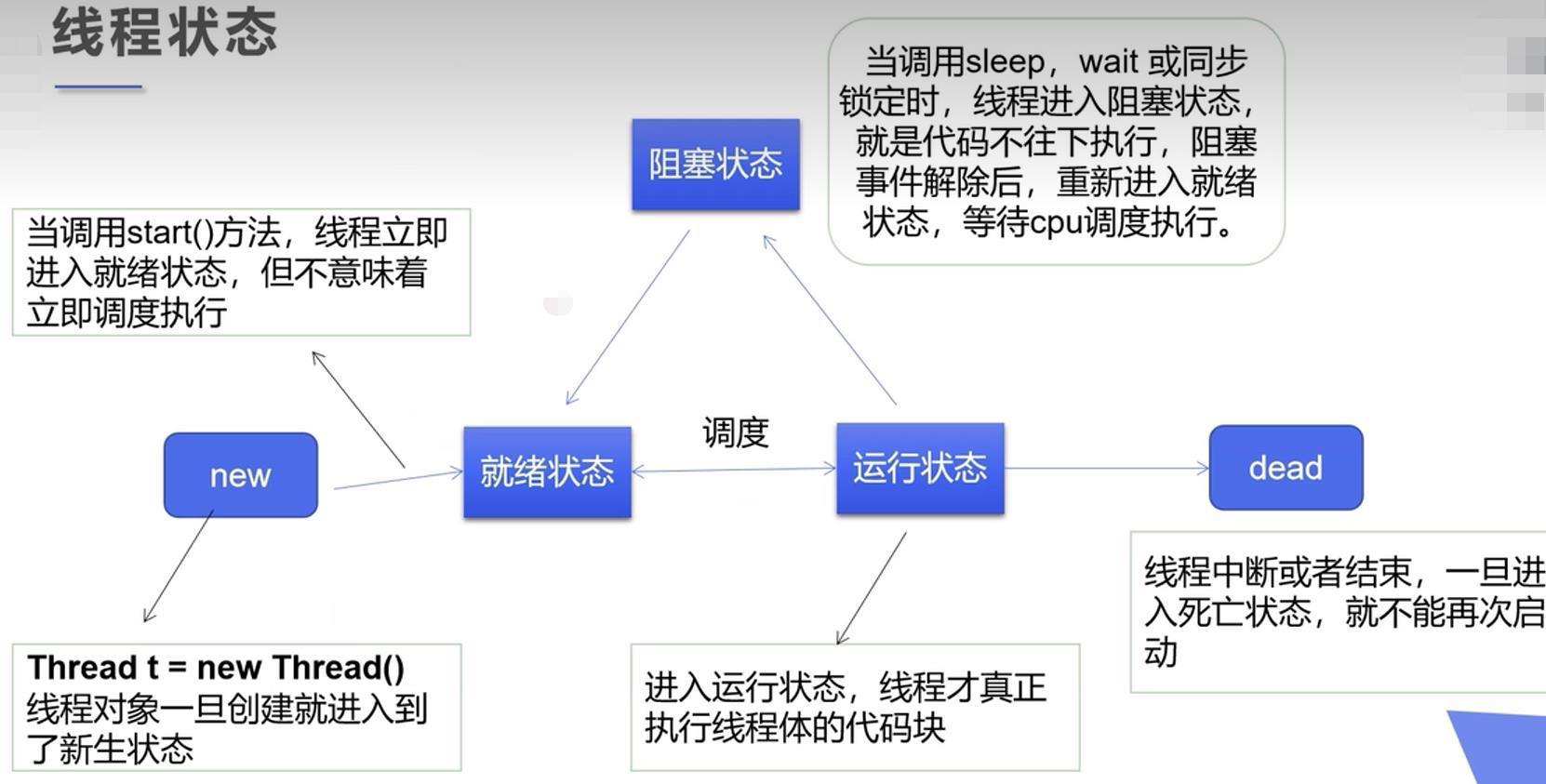
二,线程方法:
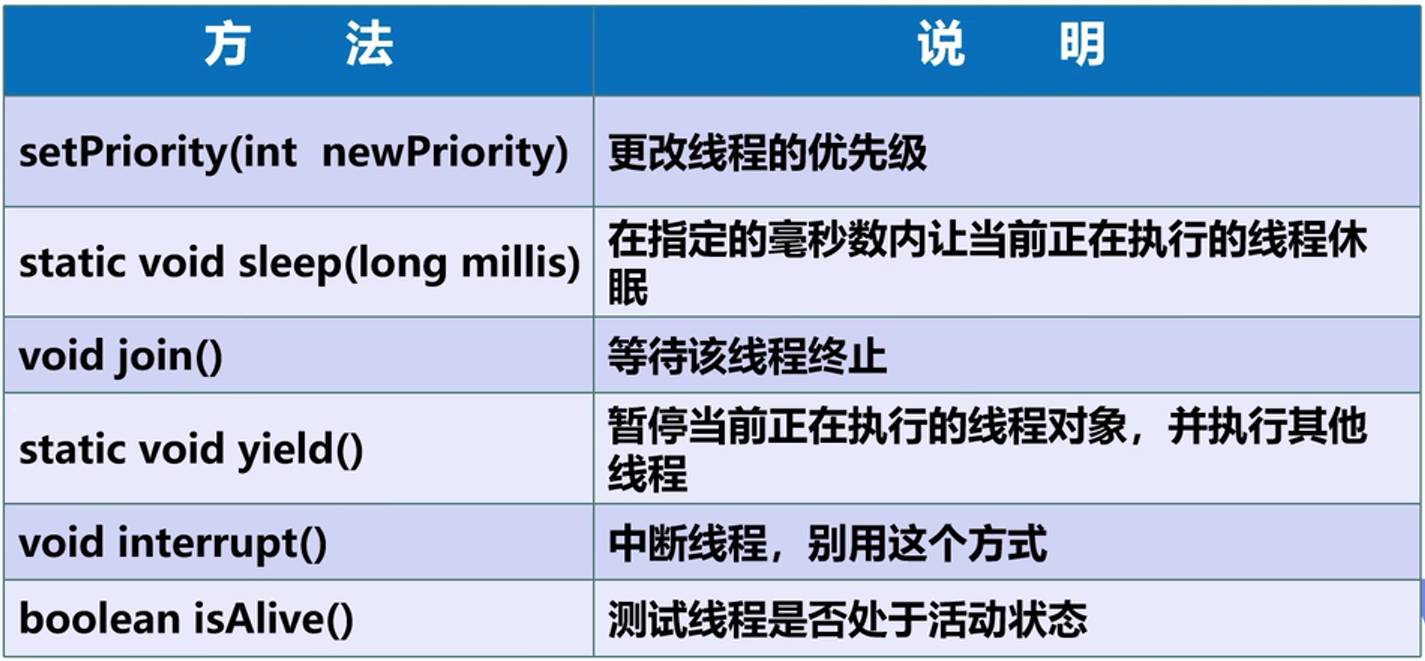
1.停止线程
*不推荐使用JDK提供的stop(),destroy()方法【已废弃】
*推荐线程自己停下来
*建议使用一个标志位进行终止变量当flag=false,则终止线程运行
//建议线程自己停止--->利用次数,不建议死循环 //建议使用标志位--—>设置一个标志位 //不适用stop或destroy等过时或者JDK不建议使用的方法 public class TestStop implements Runnable{ //设置一个标志位 private boolean flag = true; @Override public void run() { int i = 0; while(flag){ System.out.println("run.......Thread"+i++); } } //设置一个公开的方法停止线程,转换标志位
public void stop(){ this.flag = false; } public static void main(String[] args) { TestStop testStop = new TestStop(); new Thread(testStop).start(); for (int i = 0; i < 1000; i++) { System.out.println("main"+i); if (i==900){ //调用stop切换标志位,停止线程 testStop.stop(); System.out.println("线程该停止了!"); } } } }
2.线程休眠
*sleep(时间)指定当前线程阻塞秒数
*sleep存在异常InterruptedException
*sleep时间到达后线程进入就绪状态
*sleep可以模拟网络延时,倒计时等
*每一个对象都有一个锁,sleep不会释放锁
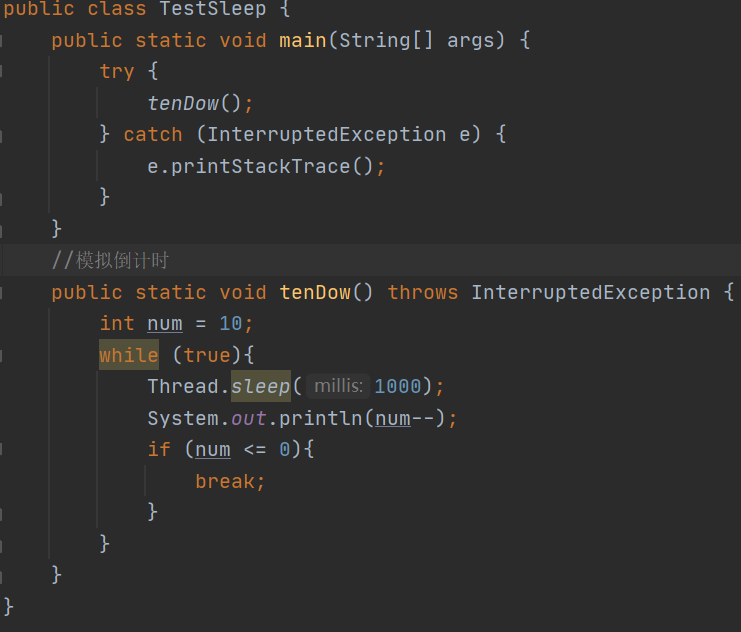
3.线程礼让
*礼让线程,让当前正在执行的线程暂停,但不阻塞
*将线程从运行状态转为就绪状态
*让cpu重新调度,礼让不一定成功
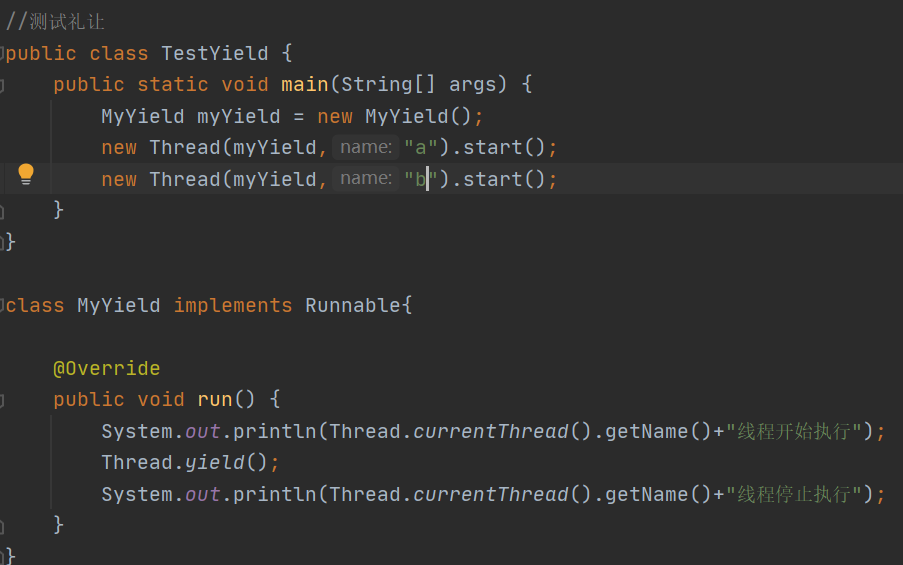
4.线程强制执行
join合并线程,待此线程执行完成后,在执行其他线程,其他线程阻塞,类似于插队
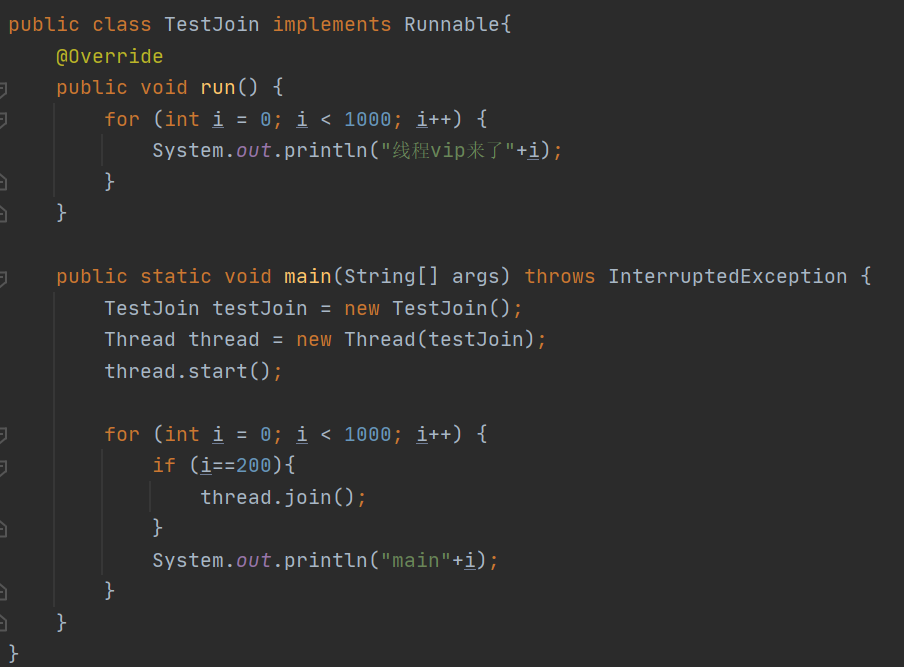
5.线程状态观测
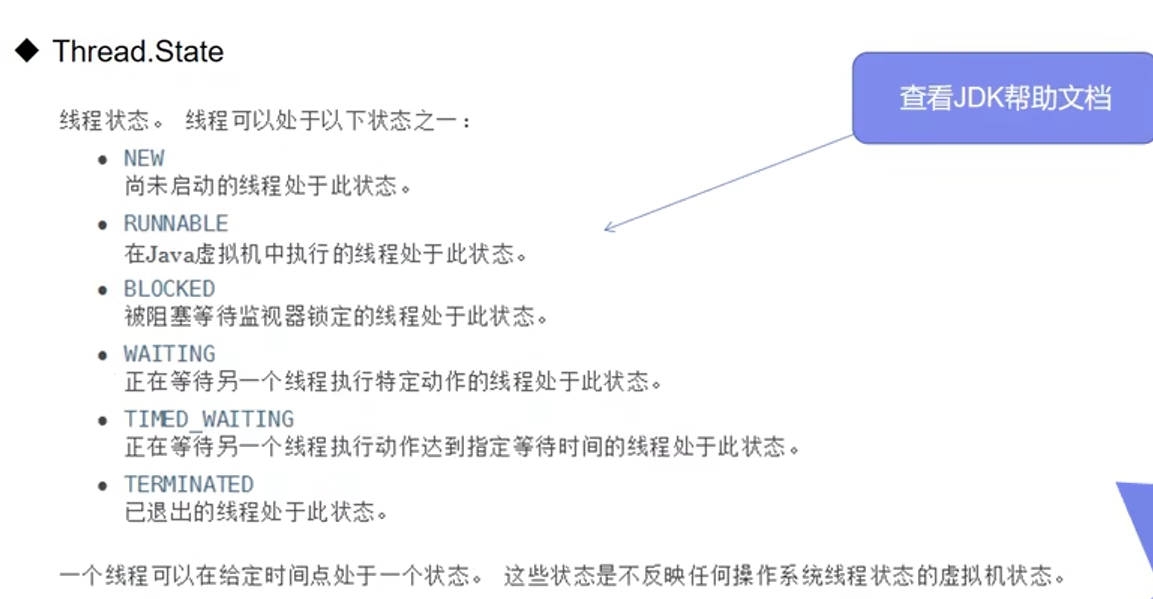 下面的运行结果,这里我dubug了,所以线程执行少
下面的运行结果,这里我dubug了,所以线程执行少 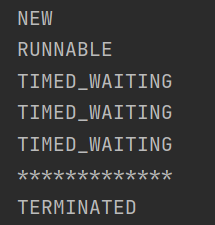
public class TestState { public static void main(String[] args) throws InterruptedException { Thread thread = new Thread(()->{ for (int i = 0; i < 5; i++) { try { Thread.sleep(1000); } catch (InterruptedException e) { e.printStackTrace(); } } System.out.println("*************"); }); Thread.State state = thread.getState(); System.out.println(state);//NEW //启动后状态 thread.start(); state = thread.getState(); System.out.println(state);//RUN while (state != Thread.State.TERMINATED){//线程不终止 Thread.sleep(100); state = thread.getState();//更新线程 System.out.println(state); } } }
6.线程优先级
*Java提供一个线程调度器来监控程序中启动后进入就绪状态的所有线程,线程调度器按照优先级决定应该调度哪个线程来执行,但仅仅只是概率高,并不一定优先级高的就优先执行
*线程的优先级用数字表示,范围0~10
Thread.MIN_PRIORITY=1
Thread.MAX_PRIORITY=10
Thread.NORM_PRIORITY=5
*使用以下方式改变或获取优先级
getPriority()
setPrrority(int ***)
public class TestPriority {
public static void main(String[] args) {
//主线程默认优先级
System.out.println(Thread.currentThread().getName()+"-->"+Thread.currentThread().getPriority());
MyPriority myPriority = new MyPriority();
Thread t0 = new Thread(myPriority);
Thread t1 = new Thread(myPriority);
Thread t2 = new Thread(myPriority);
Thread t3 = new Thread(myPriority);
Thread t4= new Thread(myPriority);
Thread t5 = new Thread(myPriority);
//设置优先级
t0.start();//不设置就为默认优先级5
t1.setPriority(1);
t1.start();
t2.setPriority(4);
t2.start();
t3.setPriority(Thread.MAX_PRIORITY);
t3.start();
t4.start();
t5.start();
}
}
class MyPriority implements Runnable{
@Override
public void run() {
System.out.println(Thread.currentThread().getName()+"-->"+Thread.currentThread().getPriority());
}
}
我们看结果:
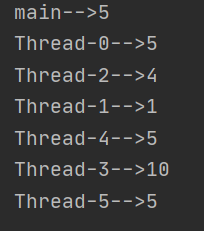 说明优先级高并不一定就优先执行
说明优先级高并不一定就优先执行
7.守护线程
*线程分为用户线程和守护线程
*虚拟机必须确保用户线程执行完毕
*虚拟机不用等待守护线程执行完毕
public class TestDaemon { public static void main(String[] args) { God god = new God(); You you = new You(); Thread thread = new Thread(god); thread.setDaemon(true);//默认是false表示用户线程 thread.start(); new Thread(you).start();//你,用户线程启动 } } //上帝 class God implements Runnable{ @Override public void run() { while (true){ System.out.println("上帝保佑着!"); } } } //你 class You implements Runnable{ @Override public void run() { for (int i = 0; i < 36500; i++) { System.out.println("你一生都开心的活着"); } System.out.println("======goodbye!world!=========="); } }






【推荐】国内首个AI IDE,深度理解中文开发场景,立即下载体验Trae
【推荐】编程新体验,更懂你的AI,立即体验豆包MarsCode编程助手
【推荐】抖音旗下AI助手豆包,你的智能百科全书,全免费不限次数
【推荐】轻量又高性能的 SSH 工具 IShell:AI 加持,快人一步
· 阿里最新开源QwQ-32B,效果媲美deepseek-r1满血版,部署成本又又又降低了!
· 开源Multi-agent AI智能体框架aevatar.ai,欢迎大家贡献代码
· Manus重磅发布:全球首款通用AI代理技术深度解析与实战指南
· 被坑几百块钱后,我竟然真的恢复了删除的微信聊天记录!
· 没有Manus邀请码?试试免邀请码的MGX或者开源的OpenManus吧